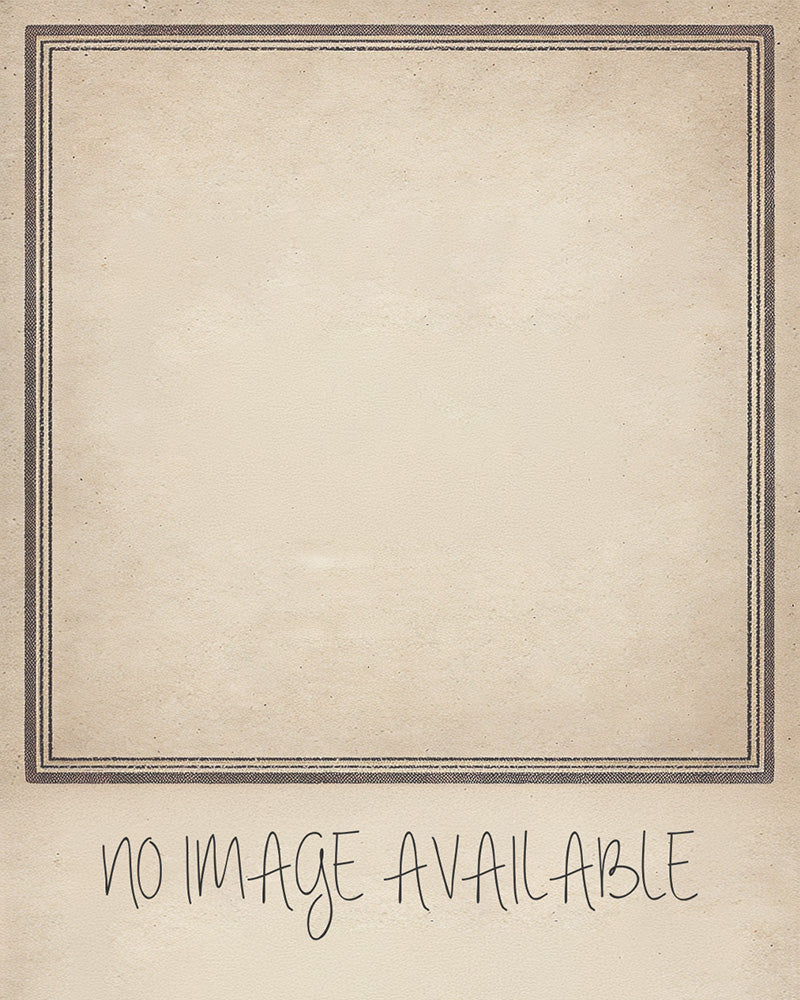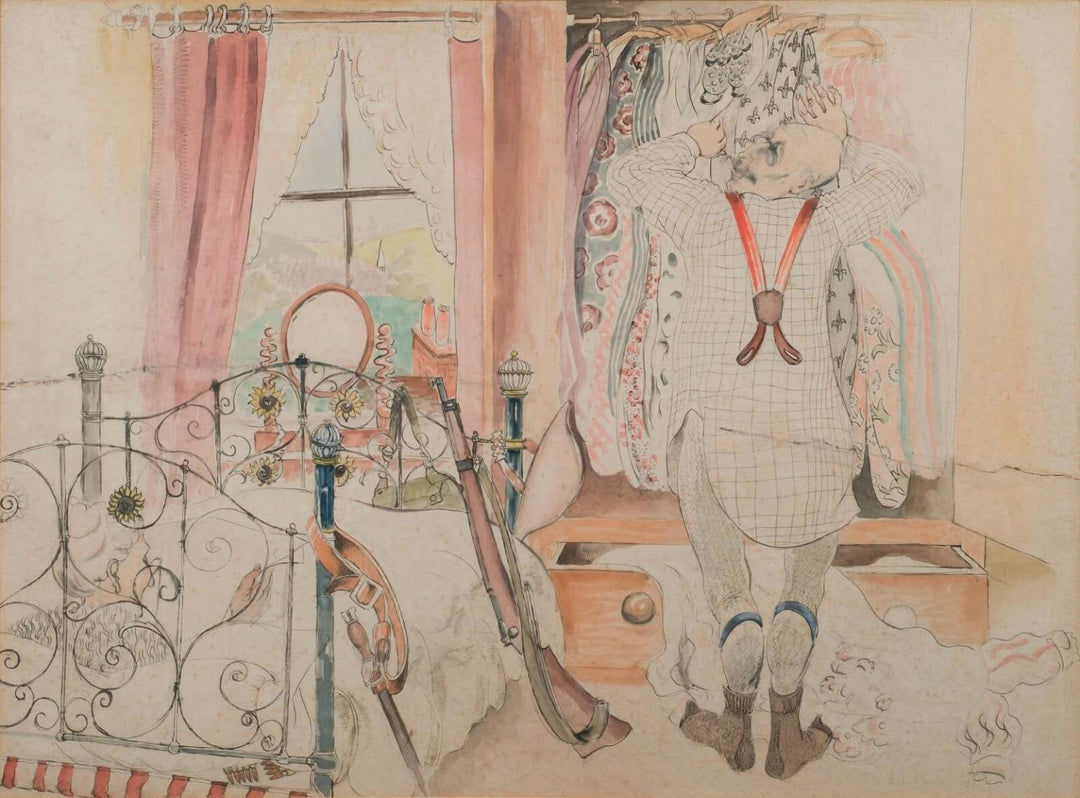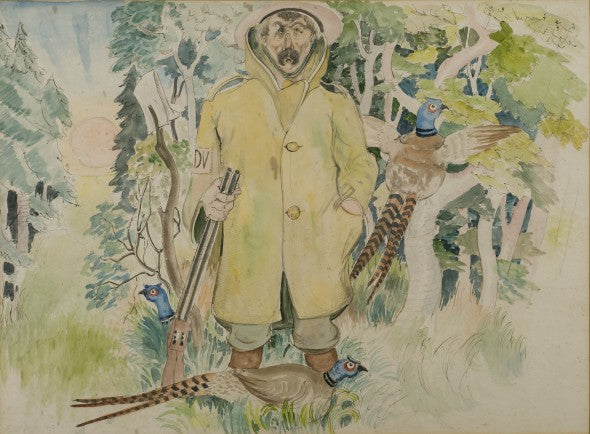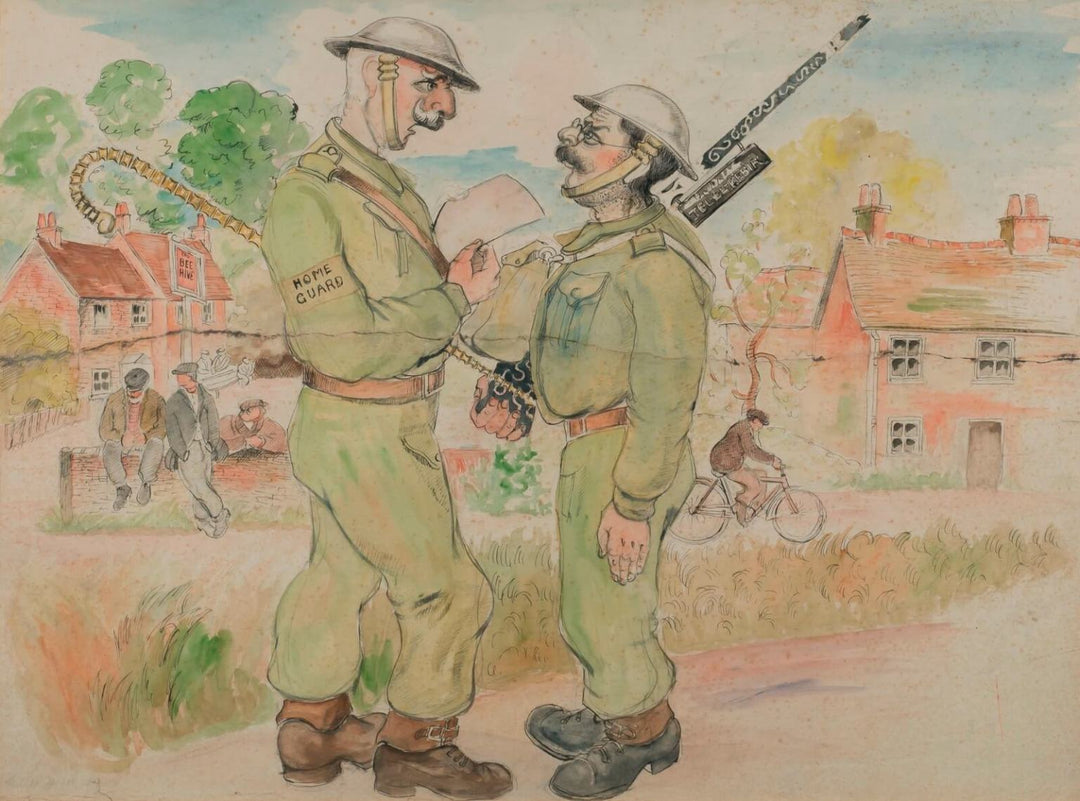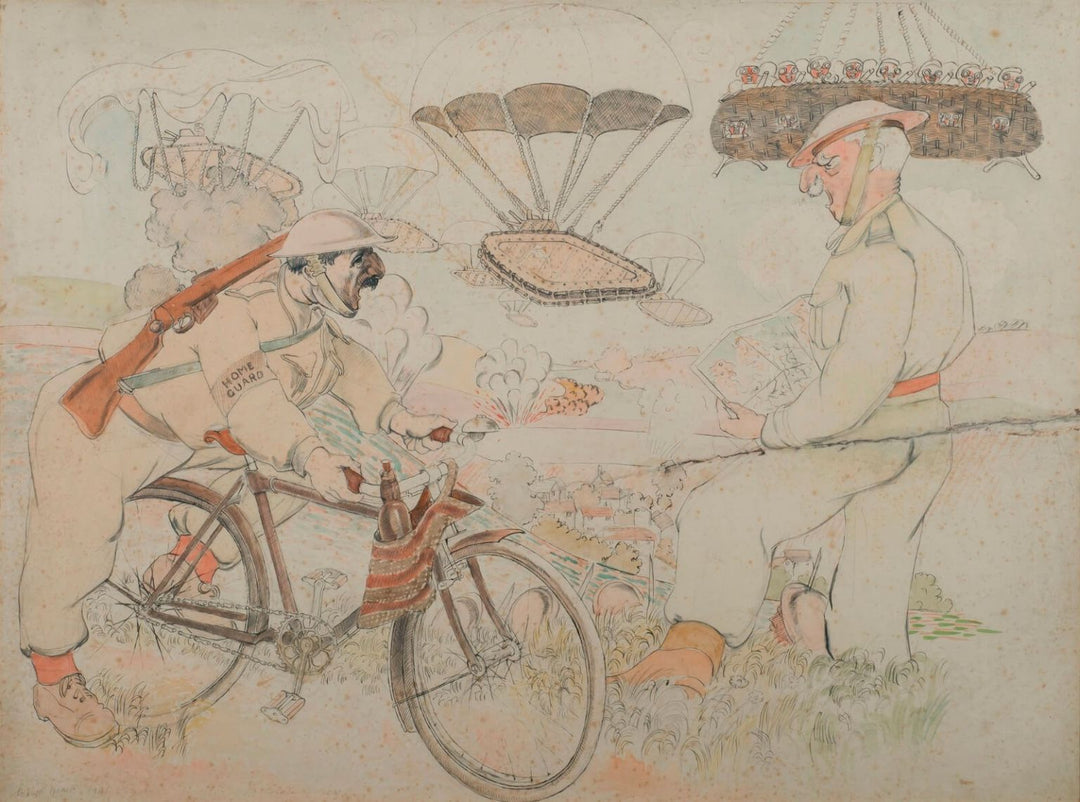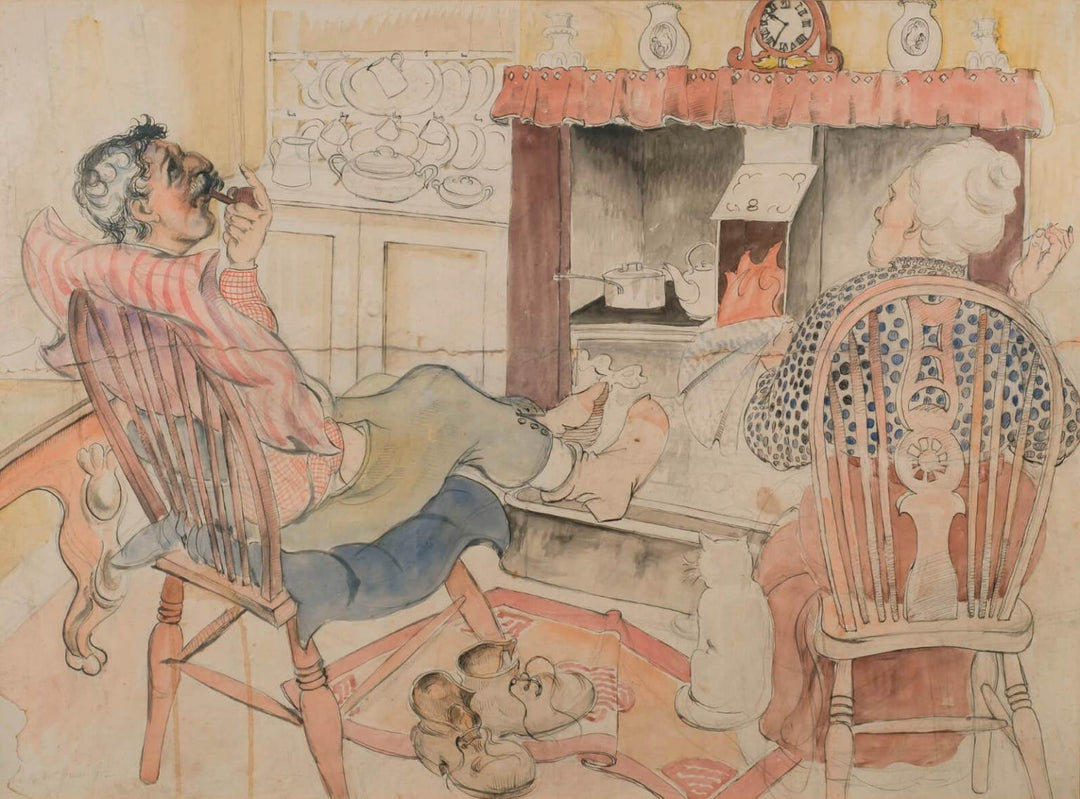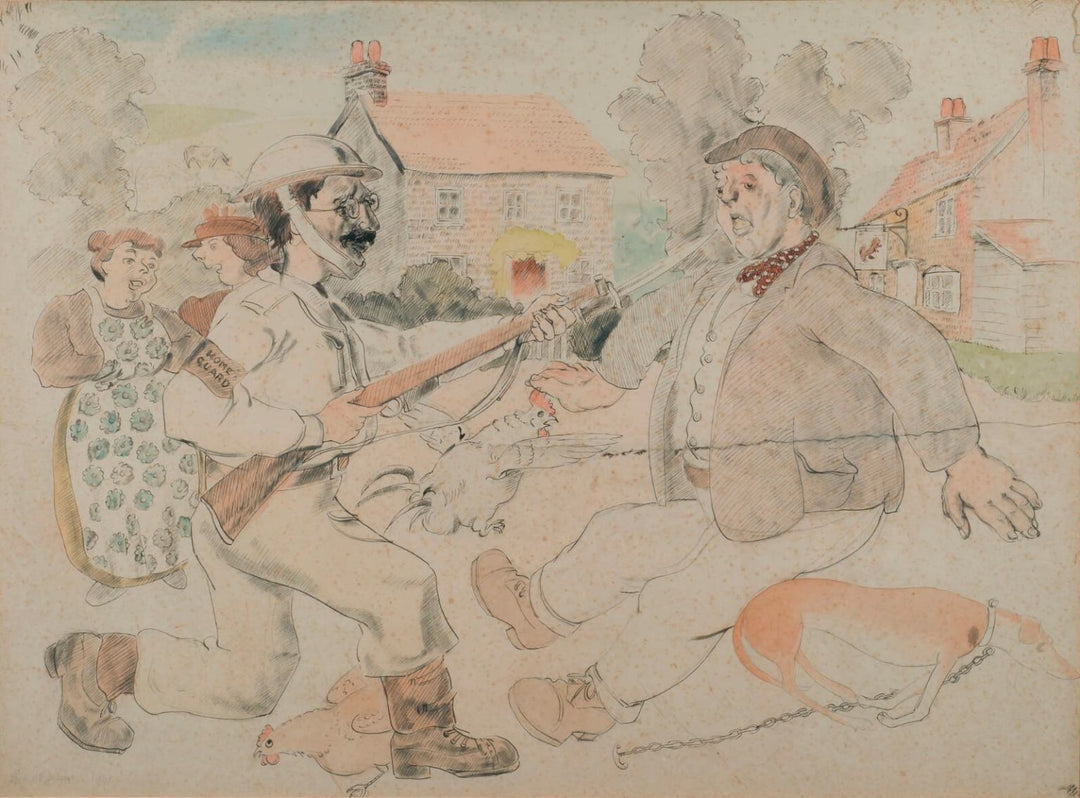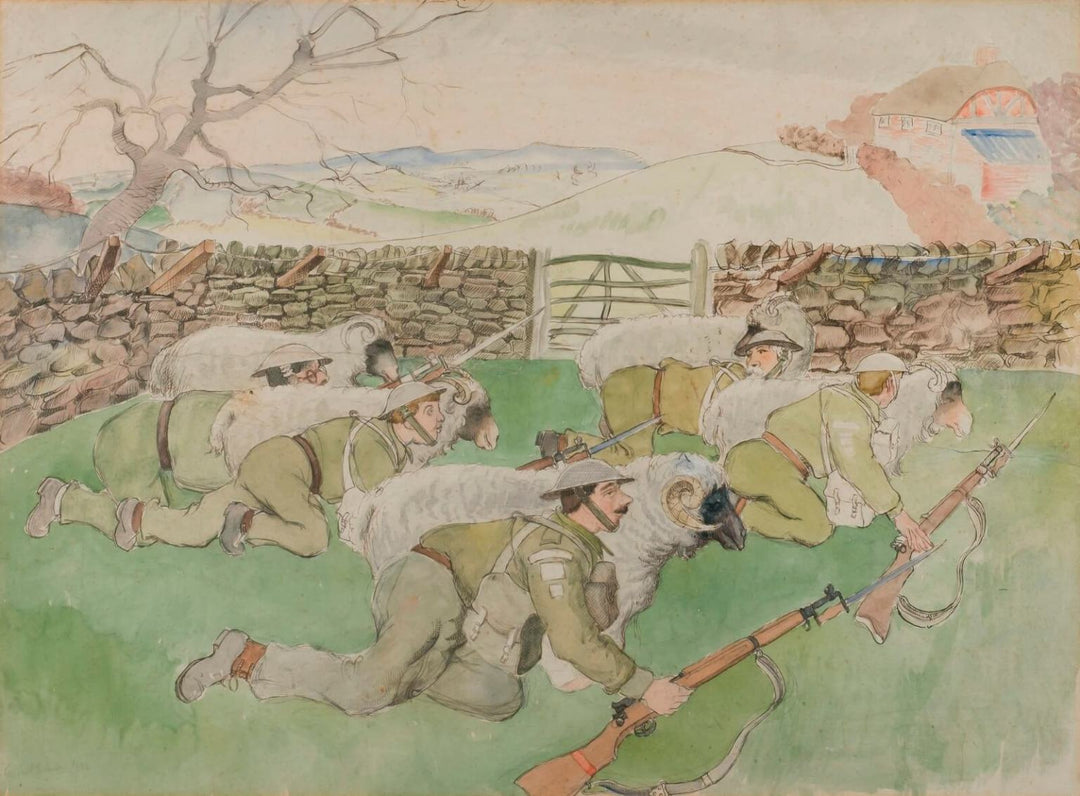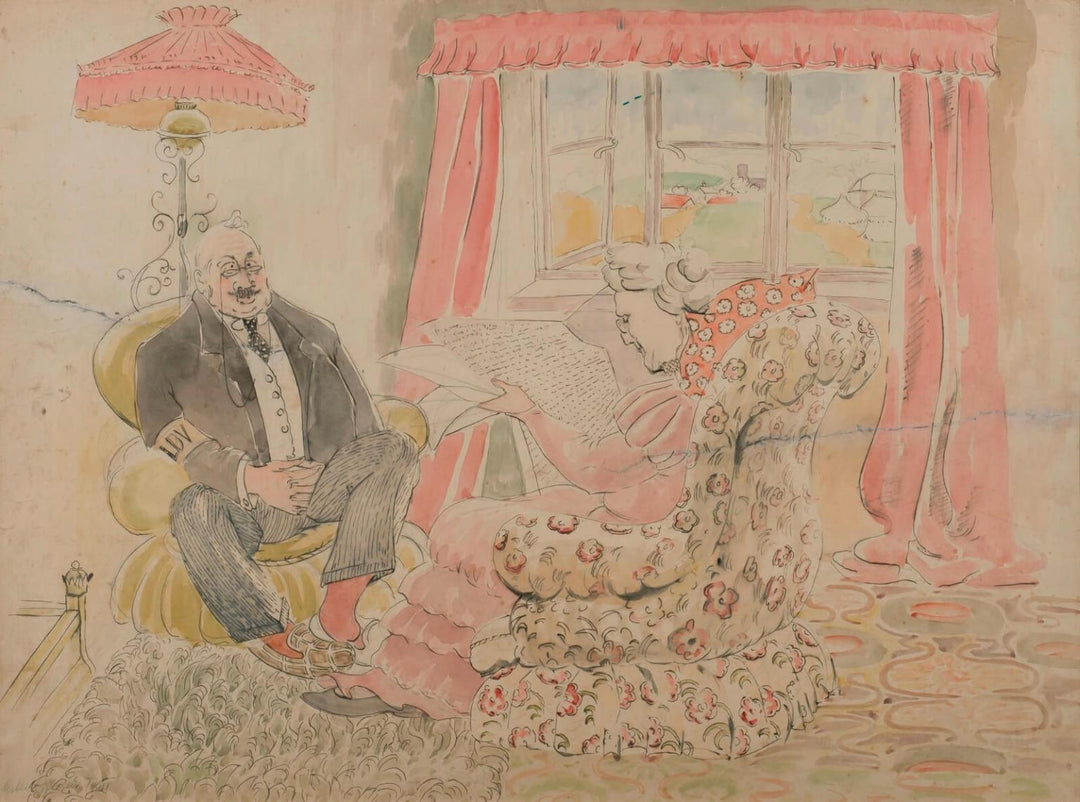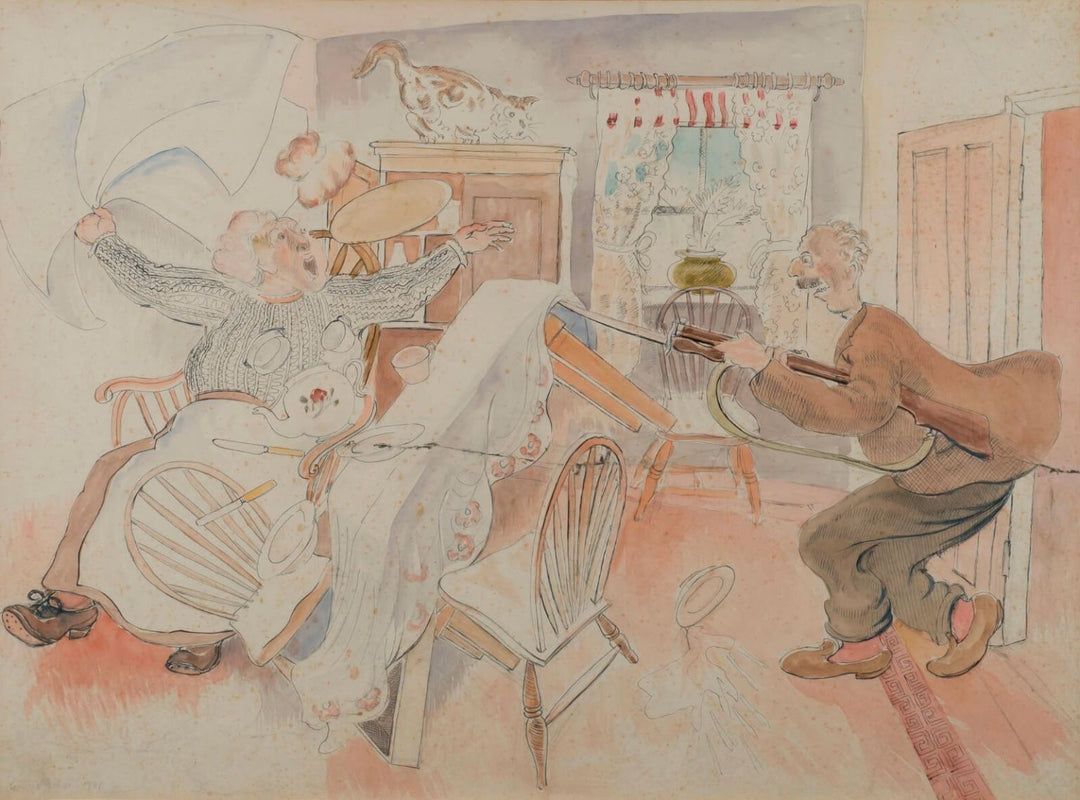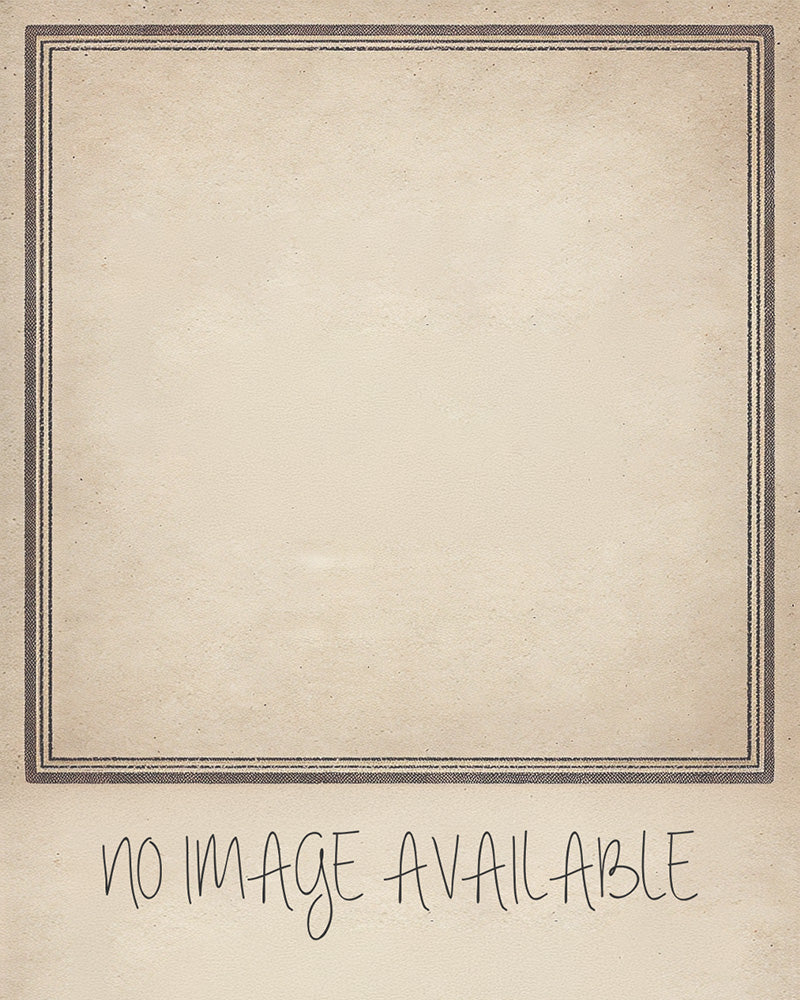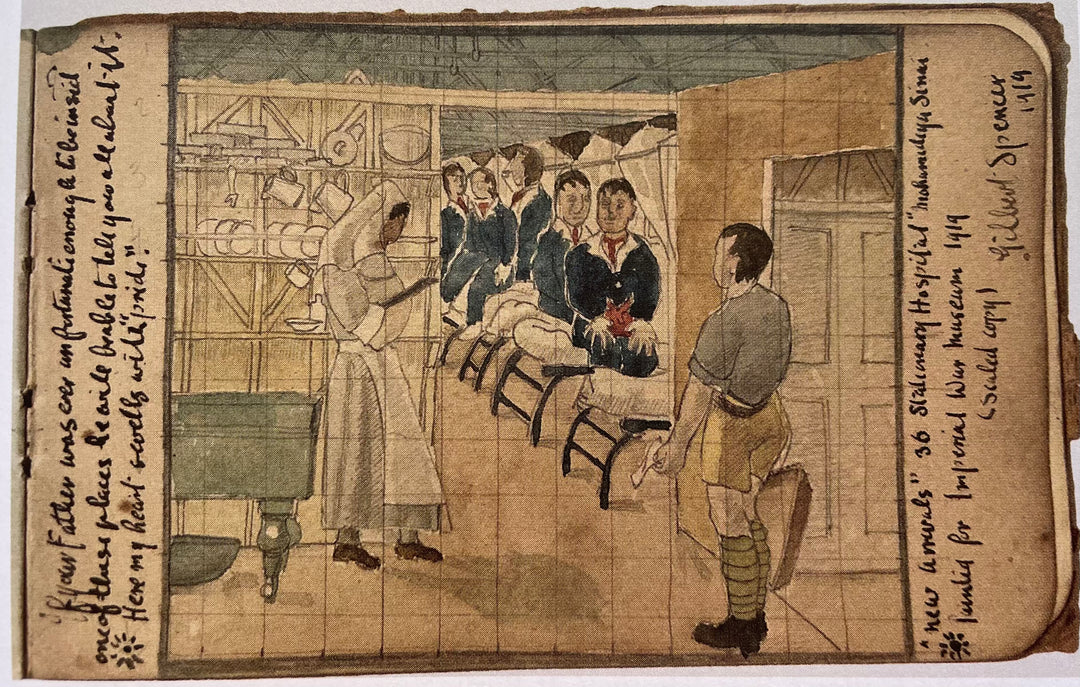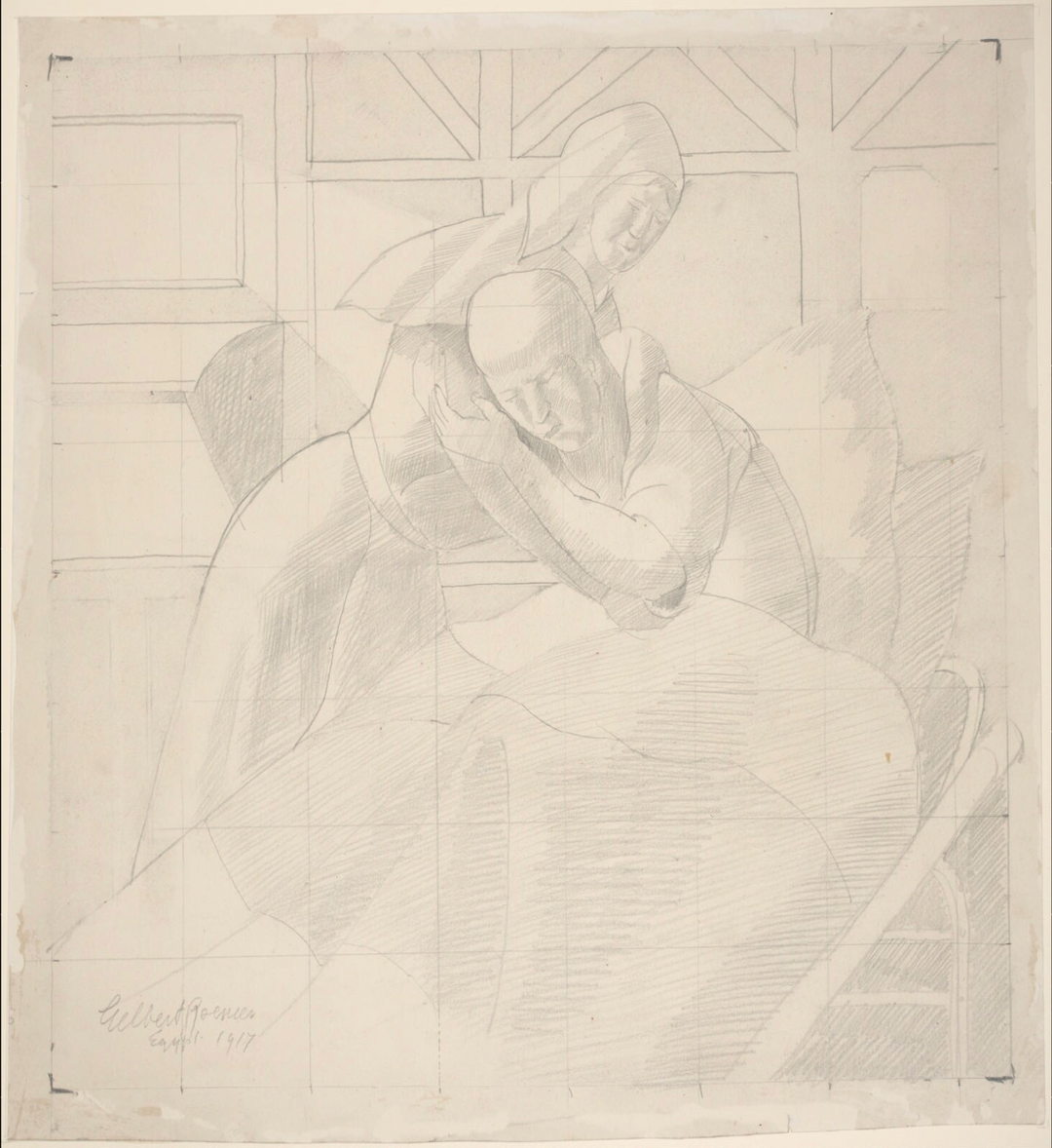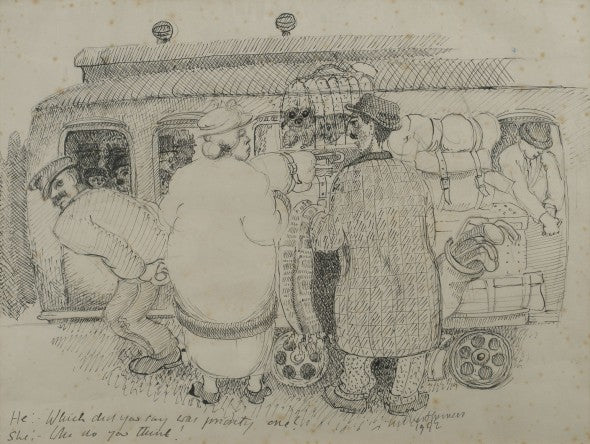Born in 1892, Gilbert Spencer was of the generation who saw service in both world wars. He was also appointed twice as an official war artist, with markedly different results. In May 1915, against the wishes of his parents (three of whose elder sons were already serving), Gilbert enlisted in the Royal Army Medical Corps. He would serve in the RAMC for the duration, initially at the Beaufort Military Hospital in Bristol (where he was soon followed by Stanley), and subsequently in the eastern Mediterranean, in Salonika, Sinai, and on board the hospital ship Laetitia. On his return in 1919, he was commissioned to contribute a painting to Lord Beaverbrook’s British War Memorials Scheme. This prestigious initiative sought to use public patronage to reinvigorate grand history painting for the twentieth century, and favoured the younger generation of avant-garde artists, who had seen active service. Many of Gilbert’s Slade and New English Art Club contemporaries were also commissioned or employed under the scheme, including Paul Nash, John Nash, C.R.W. Nevinson, William Roberts, and his brother Stanley, as well as their Slade Professor, Henry Tonks. Gilbert’s resulting New Arrivals: F4 Ward, No. 36 Stationary Hospital, Mahemdia, Sinai (1919, IWM) for which he was paid £200, was exhibited in ‘The Nation’s War Paintings’ at the Royal Academy in the winter of 1919/20, and entered the collection of the Imperial War Museum.
Gilbert’s Second World War was spent on English soil. In April 1940, he was awarded a short-term contract by the War Artists’ Advisory Committee, with a brief to depict scenes of military training in England. This opportunity arose when, in late November 1940, the students and staff of the RCA, Gilbert among them, evacuated from Blitz-ridden London to the remote village of Ambleside in the Lake District. Alongside his teaching responsibilities, Gilbert joined the 9th (Lakes) Battalion of the Westmorland Home Guard. His experiences resulted in a series of fine compositions depicting the armed volunteers at work and on patrol in the lush countryside. Grasmere Home Guard (1943, IWM), painted for the WAAC, and a further group of paintings, Troops in the Countryside (c. 1941-3, 1st version, Cartwright Hall, Bradford; 2nd and 3rd versions, private collections) are a natural extension of his landscape painting, with soldiers (and sometimes cows) disposed frieze-like against a pastoral backdrop, their khaki uniforms blending into the muted greens and browns of the English countryside.
The subtle comedy of these paintings was unleashed in a series of satirical ‘Home Guard’ watercolours that anticipate the japes of ‘Dad’s Army’ by twenty-five years. Gilbert later described the civilian defence force as ‘a brilliant stratagem on the part of the government to make us behave so ridiculously, and yet succeed in making us immensely proud of what we were doing!’, and these delightful vignettes, which narrowly escaped destruction at the hands of the censor, (Gough, 2024, pp. 251-3) reveal a self-deprecating humour that evidently sustained him through the years of disruption and discomfort.




